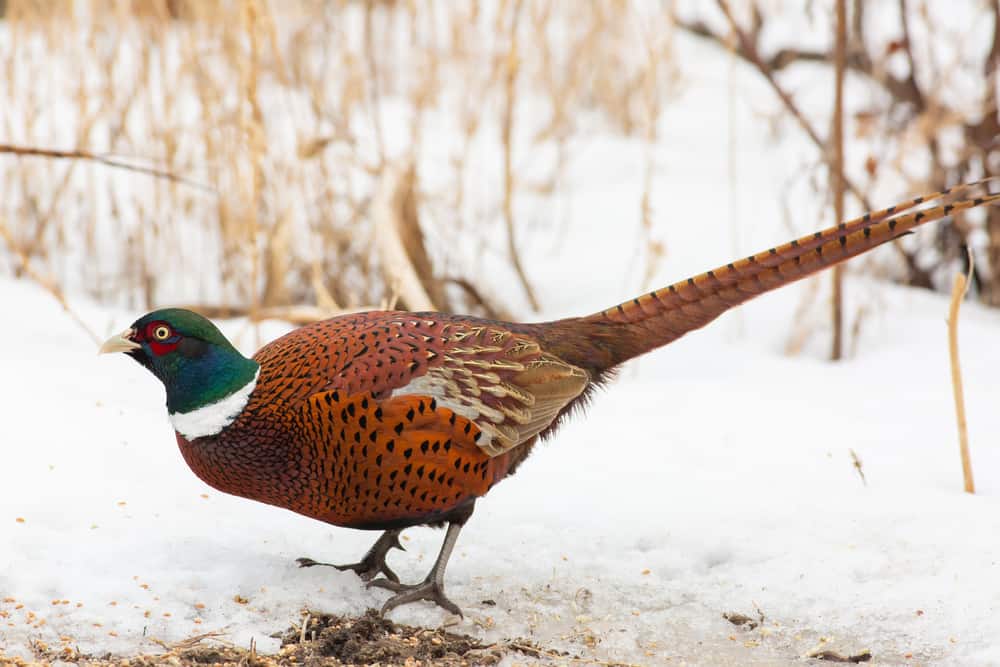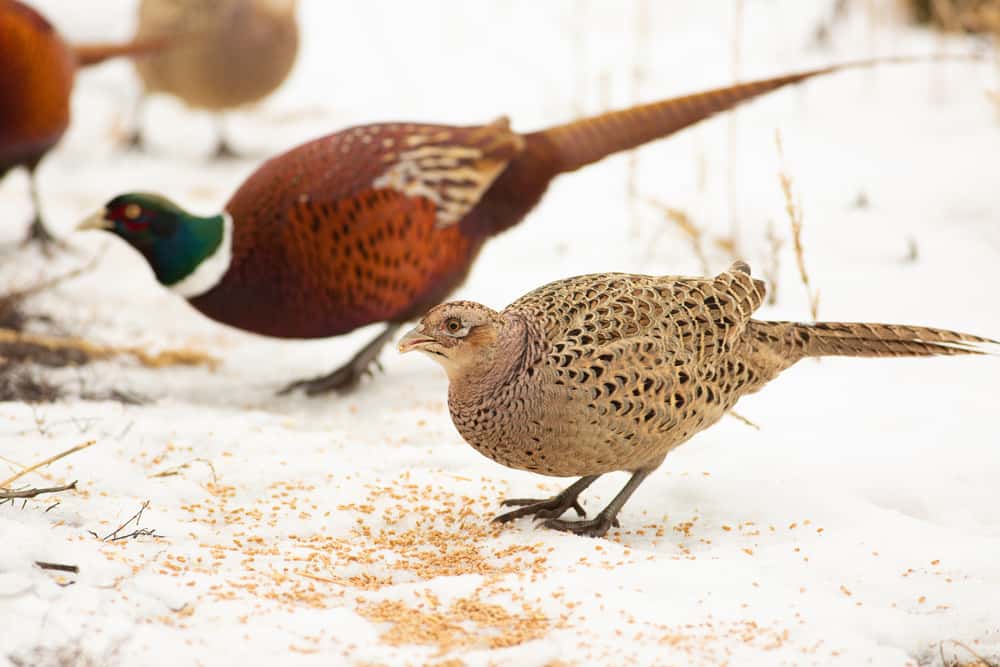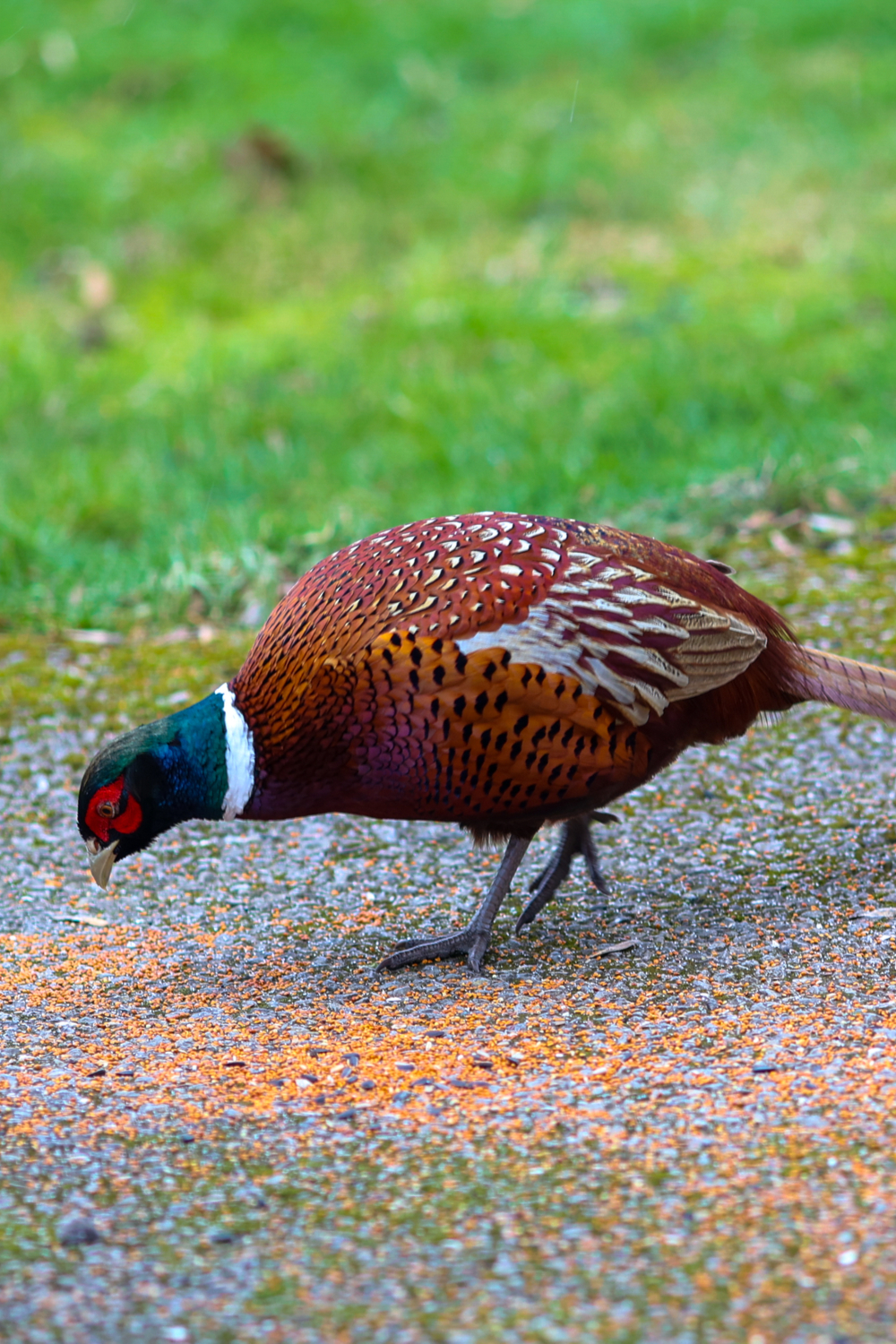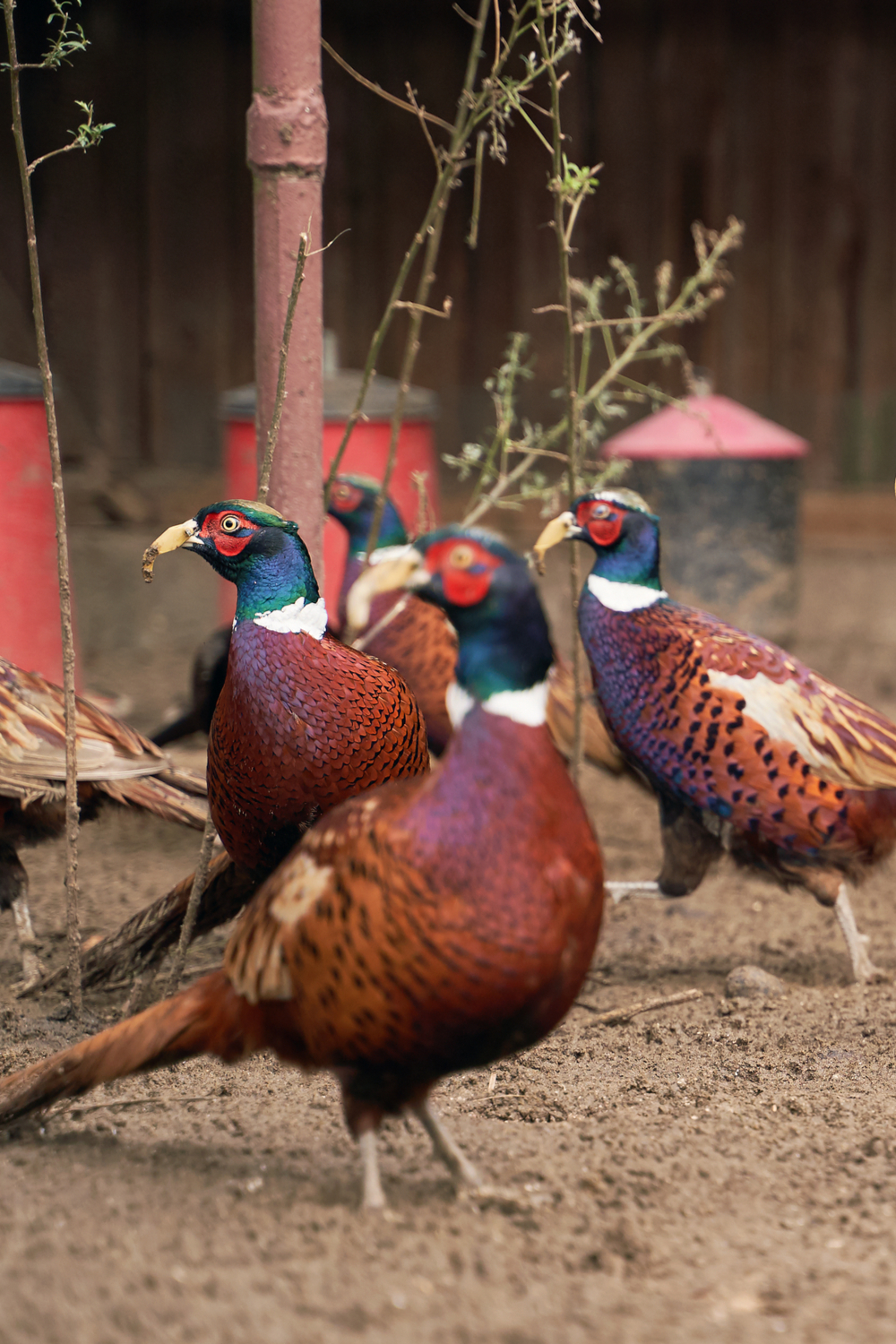Pheasants are well-known game birds usually bred for hunting. Other people choose to keep them in their farms or backyards as pets for entertainment and their beauty.
In the U.S, they are commonly known as ring-necked pheasants. So, what do pheasants eat? You’ll get the answer to this question comprehensively.
Pheasants Habits And Biology
The common Pheasants are birds native to Asia and parts of Europe. The bird has also been introduced to other parts of the world, such as North America.
There exist about 39 different species of these birds, including the common pheasant, argus, golden pheasant, and more.
You can find pheasants in various habitats ranging from farmland, scrub, woodland, and wetlands. Common pheasants mainly live in grasslands near water sources surrounded by small groups of trees.
These exotic birds come in various shapes, sizes, and colors. The male common pheasants show a great range in plumage (feathers) color compared to their female counterparts.
Generally, pheasants’ weights range from 0.5-3 kilograms. Males pheasants, on average, weigh 1.2 kilograms and females average 0.9 kilograms. Their wingspan ranges from lengths of 56-86 centimeters.
Pheasants are diurnal, meaning they are primarily active at dusk and dawn. They spend most of their time on the ground, where you’ll find them foraging for food.
Most pheasant species and subspecies are capable of flight but only over short distances. They typically fly at speeds of 43-61 kilometers per hour (km/h) and can reach up to 90km/h when being chased. Due to their incapability to fly over long distances, pheasants don’t migrate during cold seasons.
Male common pheasants usually have a harem of several females that they attract using the brilliant plumage. They usually nest on the ground on leaves and grass and under the cover of thick hedges.
Once in a while, pheasants will nest on a haystack or occupy an old nest abandoned by other birds. At night they will roost in sheltered trees.
Female pheasants lay about 8-15 eggs over 2-3 weeks. Once hatched, the chicks will stay close to their mothers. However, the chicks remarkably leave their nests only after a few hours. By the time they are around 12-14 weeks old, young pheasants are capable of flight.
At the age of 15 weeks old, you wouldn’t be able to tell the difference between a juvenile pheasant and an adult. Within a year, young males become productively mature. Kids. They grow up so fast!
What Do Pheasants Eat In The Wild?
Pheasants are omnivores and therefore feed on both plant and animal matter. They, however, consume a higher percentage of plant material compared to animals.
Pheasant chicks feed more on insects than plants as they require protein for rapid growth and development. They can reach weights of up to 225 grams in a week from primarily feeding on insects.
Common pheasants primarily eat seeds. American ring-necked pheasants diets consist of 92% plant material. Pheasants consume many grains during the cold seasons and switch to flower buds, shoots, and anthropods during spring.
Pheasants mainly forage on the ground but can sometimes be found feeding on treetops.
Being omnivores, pheasants feed on a wide variety of foods. As previously mentioned, the greater proportion of the food they consume is plant material. Below are some more examples of foods they consume:
- Insects
Pheasants enjoy eating a large variety of insects, such as earthworms, snails, praying mantises, grasshoppers, spiders, butterflies, and many more. Insects are rich in protein that aid in the growth of and maintenance of their plumage.
- Seeds
In the wild, seeds make up the better part of a pheasant’s diet. Examples of seeds they enjoy include sunflower seeds, acorns, barley, buckwheat, corn, weed seeds, among others.
- Grass and seedlings
You will also find pheasants feeding on a wide variety of grasses and plants. They will feed on the leaves of young plants, soft stems, and leaves of any other edible plants. Also, they like to eat leafy greens like broccoli, kale, spinach, and more.
- Fruits and veggies
Pheasants will consume fruits or veggies if or when they come across them. They are opportunistic eaters and don’t miss a chance to sample anything new. Pheasants will practically eat any fruits, be it pineapples, tomatoes, or pumpkins.
Sometimes these birds will be seen eating small mammals like mice, reptiles like lizards, and even small birds. Their digestive systems are highly flexible and can adapt to new diets rapidly.
What Do Pheasants Eat As Pets?
Pheasants make good pets, especially when raised separately from other birds and animals. Male pheasants may damage their long feathers when kept with animals.
Tamed pheasants quickly develop bonds with humans that feed them. That said, some don’t like interacting with humans at all.
Like pheasants in the wild, they tend to spend more time on the ground foraging despite their ability to fly. However, in captivity, they should be kept in enclosed areas to prevent them from flying away.
It would help if you fed your pet pheasants diets rich in proteins. Their diets should contain at least 28% proteins in the early stages of their lives. As they grow older, you should gradually reduce their protein intake to about 17%.
Commercial feeds offer a balanced diet. It is vital to occasionally provide your birds with treats like fruits and grit to aid their digestion.
Their diets in captivity are more or less the same in comparison to their counterparts in the wild. Some of the foods you can offer them include:
- Peanuts –provide a lot of supplemental nutrients such as protein, phosphorus, magnesium, potassium, thiamin, and niacin. They are also high in saturated fats that help reduce the amount of bad cholesterol in the pheasant’s body.
- Plants –pheasants enjoy plants like spinach, herbs, salads, and other ground plants. You can offer your pet pheasants dandelion leaves rich in vitamins A, B, C, K, and other minerals such as magnesium, iron, calcium, and potassium.
- Poultry feed –is rich in several types of nutrients required by pheasants. Some of these minerals include fats, vitamins, proteins, carbohydrates, and more.
- Drinking water –provide water for these birds to help them stay hydrated and healthy. The water you provide should be clean and free of chemicals such as chlorine if possible.
- Fruits and veggies –are rich sources of fiber and other nutrients such as vitamin C. You can provide them with fruits such as red and blackcurrant.
- Seeds and grains –such as buckwheat, oats, acorn seeds, barley, and other edible seeds serve as part of the staple diet of pheasants of all species.
Tips To Feeding Pheasants
Pheasants are wild birds that are shy and rarely seen. But like their chicken cousins, they can be raised in backyards and are a good source of entertainment.
When raising pheasants, it would be best to keep them confined to prevent them from flying off and far from the reach of predators. Keeping pheasants is an easy task provided you know their basic requirements.
Here are some factors to consider when caring for pheasants:
- Set up an aviary for your pheasants to shield them from predators.
An aviary is a large enclosure where birds are kept. Unlike bird cages, aviaries are well spaced to allow birds free movement where they can also fly. Aviaries are also called flight cages.
Aviaries protect them from predators such as dogs, cats, coyotes, or foxes depending on the area you live.
- It’s best to keep more than one pheasant to ensure that they have company.
You can keep two females together as males are most likely to be aggressive towards each other. Depending on your preference, you could also keep two females and one male together in the same enclosure.
- Ensure your pheasants’ aviary has enough access to light.
The opening to the aviary should be large enough for the pheasant to enter and exit without damaging their feathers. The enclosure should also be equipped with perches above the ground for the pheasants to roost on at night.
- Provide your pheasants with a diet that is rich in protein.
As previously mentioned, younger pheasants’ diets should contain at least 28% protein and gradually decrease with time as they grow older. Commercial feeds serve as balanced diets as they have all the nutrients required by the birds.
- Feed your pheasants a variety of foods to meet their needs for different seasons.
During winter, serve them a diet that is 50% based on commercial pellets and corn. You can also offer them fruits and peanuts.
- Provide your birds with grit that will help them grind food for digestion.
Serve your pheasant’s food in a dish sprinkled with some grit. You should serve their food in an area far from the reach of other birds.
- Finally, ensure your birds have access to clean water at all times every day. The water you give them should be room temperature (20-22o/68-72oF). Cold water can cause pheasants to chill and ultimately lead to their death.
Summary
Now, if anyone ever asks you, “what do pheasants eat,” you should hold the answer at your fingertips. Pheasants are fantastic birds that you’ll enjoy having on your farm. Remember to feed them proteins to aid in their rapid development and provide sufficient space to roam around.




CAN YOU JUST FEED STRAIGHT BARLEY TRHANKS FRO HELP